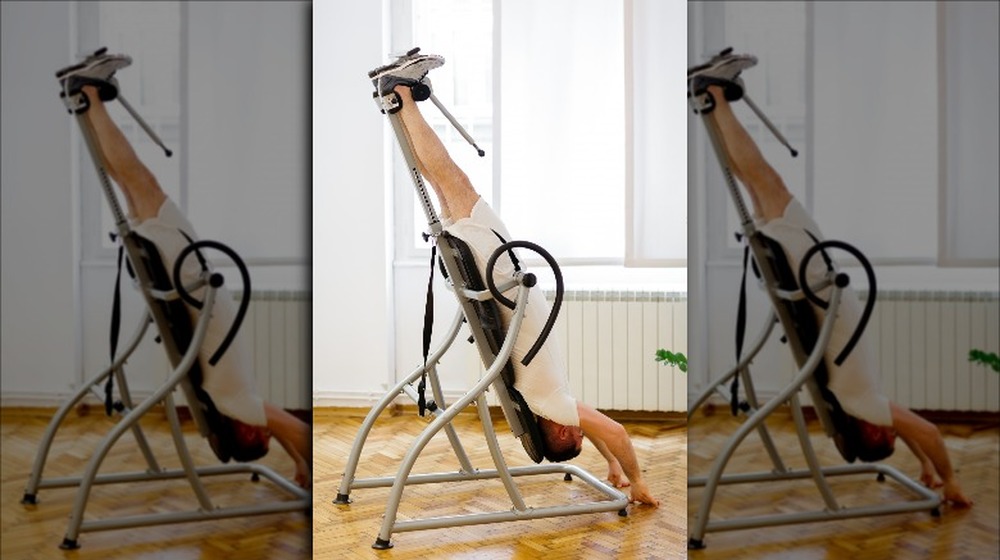What Happens To Your Body When You Hang Upside Down
Hanging upside down was probably something you liked to do as a kid, probably on the monkey bars at the playground. But what really happens to your body when you hang upside down?
Your heart works to circulate blood throughout your body and is used to doing so while you're standing, sitting, or lying down. It has a harder time circulating blood properly when you're hanging upside down. Blood will go to your head and stay there because your body will be slow circulating that blood away. Your heart will be overwhelmed with too much blood coming in, and your heart rate will slow. It's used to keeping blood from pooling in your feet, not your head. Gravity will put pressure on your lungs from your other organs pressing against them, reducing your oxygen intake. It also puts pressure on your eyes. Hanging upside down for too long is risky and can even be fatal (via Healthline and How Stuff Works).
Hanging upside down for short periods of time can be therapeutic. This is called inversion therapy, and you may have seen an inversion table where someone lies on it, gets strapped down at their feet and can hang upside down for a few minutes. There are benefits and risks to inversion therapy.
Benefits of inversion therapy
These studies have shown that hanging upside down on an inversion table can reduce back pain, sciatica pain and even prevent back surgery. A 2013 study on 47 people showed that inversion therapy with a 60 percent incline for eight weeks helped people with chronic lower back pain by reducing pain, improving trunk strength, and improving lumbar flexibility. Participants did three sets of three-minute inversions at zero degrees, 30 degrees, and 60 degrees.
Inversion therapy can even help prevent the need for surgery. It can help decompress the spine and help reduce pain from sciatica, slipped or herniated discs, and scoliosis, according to a 2014 study. Researchers reviewed eight different studies with hundreds of people.
A 2012 study found that inversion therapy can reduce the need for back surgery in people with lumbar disease. In this small study, with 24 people scheduled for back surgery, 13 were given inversion therapy and physiotherapy, while the other 11 were only given physiotherapy for six weeks. Ten people in the inversion therapy and physiotherapy group canceled their surgeries.
While these studies show that inversion therapy can help reduce back pain, they are small studies. More and larger studies need to be done to see how inversion therapy really affects someone's health. There are also risks involved with hanging upside down.
Inversion therapy risks
There are many risks with inversion therapy if you have certain health problems or take certain medications. These make it risky to try hanging upside down for any amount of time. Check this list and consult your doctor to see if you have any health problems that could make inversion therapy risky.
Avoid inversion therapy or hanging upside down in general if you have any of the following health conditions or use certain medications. If you have high blood pressure, heart disease, or stroke history, do not try inversion therapy. Also avoid this therapy if you take any blood clotting medications or medications for blood pressure, or have any eye health problems such as glaucoma, conjunctivitis — also known as pink eye — or have a retinal detachment. Do not hang upside down if you have an ear infection. You also need to avoid inversion therapy if you are pregnant or obese. If you have any bone conditions such as osteoporosis or broken bones, don't hang upside down. Also, avoid this option if you have a hernia (via Healthline, Mayo Clinic, and Medical News Today).
If you're healthy, you can start with 30 seconds on an inversion table and gradually work your way up to two or three minutes. Stop immediately if you don't feel right. You could work up to 20 minutes, but be careful (via Healthline).


